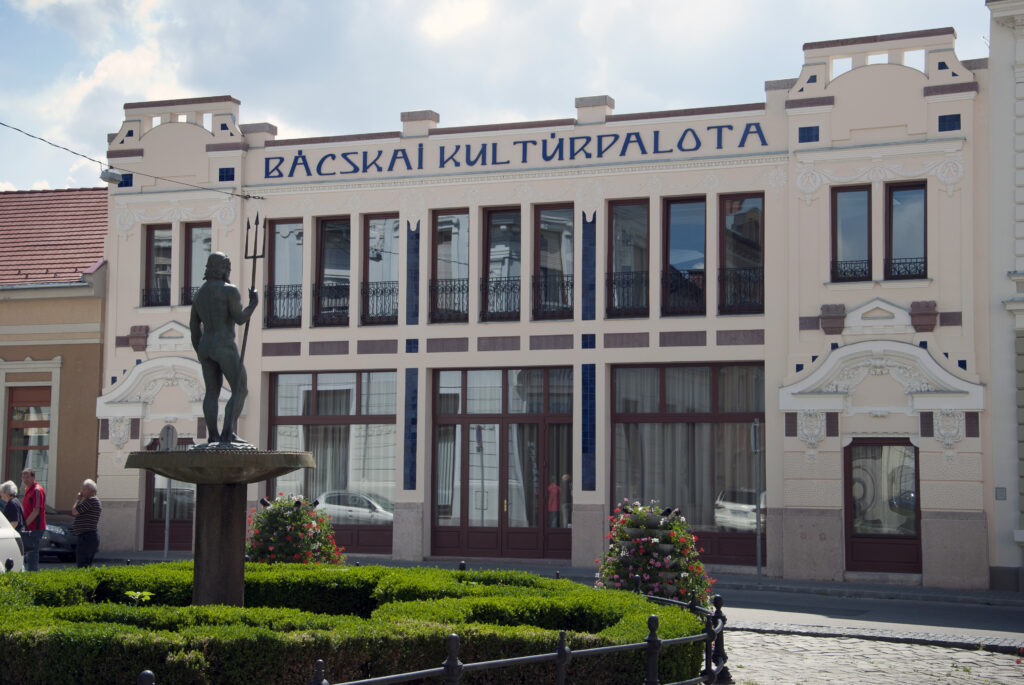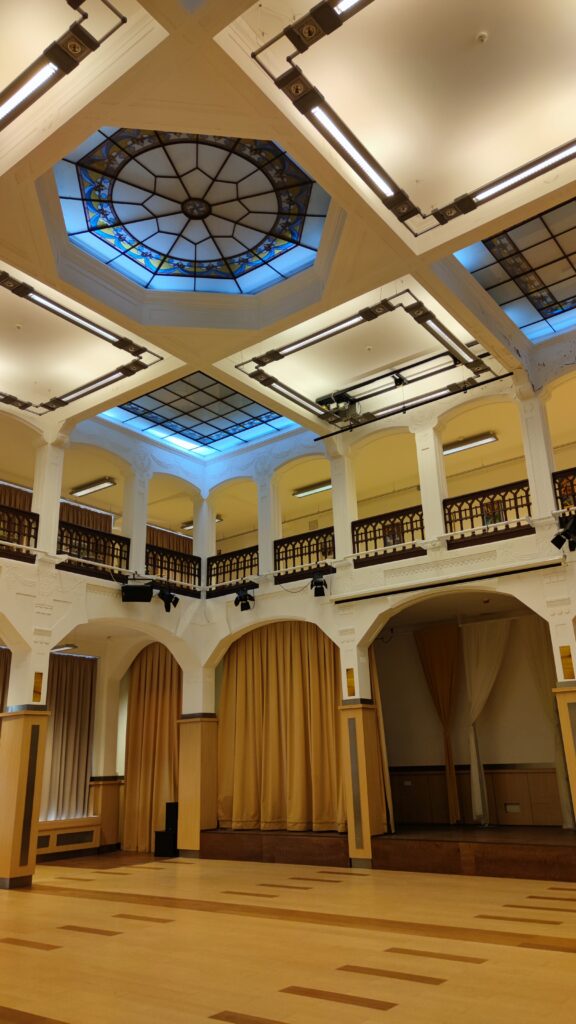The Bácskai Palace of Culture is located in the main square of Baja, on the Szentháromság Square.
The square is also known as "St Mark's Square of Baška", as it is bordered on three sides by eclectic and classicist buildings and on the fourth by Sugovica.
The Palace of Culture bears almost all of Baja's distinctive architectural features: its three facades were built in three successive periods between 1813 and 1907. Its main façade overlooks the Trinity Square. It was built by Antal Mészáros, chief magistrate and brother of Lázár Mészáros, the Minister of War of the War of Independence in 1848.
In 1913, the first open-air screening was held in the city from the balcony of this building. The director of the screening, György Szilágyi, opened the first "stone cinema" in the city, called Uránia, in the same building in 1913. The second part of the complex faces Attila Street. It is a classicist, historicist, one-storey building. Founded in 1813, the building of the former Székely Leó Ironmonger's Shop is a structural unit with the one in Szentháromság Square. The third building of the complex is the Art Nouveau monument at 3 Szabadság Street, built in 1907, which is also connected to the above two buildings by its interior spaces.
At the beginning of the 20th century, it operated under the name of Reich Farkas Fiai, a fashion, linen and carpet store, which was modelled on the shops of Vilmos Reich and Gyula Reich in the world's cities. Members of the Reich family owned the store until nationalisation in 1948, and from 1950 it became known as the Baja department store, together with the former Mészáros house and the Leó Székely hardware store, which was integrally linked to it. The building was renovated and modernised in 2010 with the support of the Norwegian Fund and the city's own resources.
Over the years it has become an artistic centre for Baja and the surrounding villages. Its community spaces are suitable for gatherings, clubs, workshops, art and children's activities, and traditions. As the name suggests, it functions as the Palace of Culture of Upper Baja. From 2011, the building was operated by Baja Marketing Ltd., and from October 2021, it became the seat of the city's public cultural institution, the Bácskai Cultural Centre.












